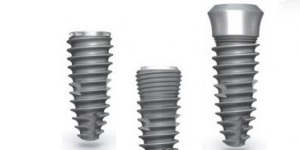
بارگذاری تدریجی استخوان
2015-07-21
درمانگر در حوزه ایمپلنت
2015-07-25molding teeth and crown
Raw Materials
There are four main types of materials used in crown construction: The plasters used to create the mold, the materials from which the crown itself is made (e.g., metal,ceramic, plastic), the adhesives used to cement the crown in place, and the coatings used to cover the crown and make it more aesthetically appealing.
Molding plasters
Plaster molds are made from a mixture of water and gypsum powder. Used for dental applications since the 1700s, gypsum is finely divided calcium sulfate dihydate. Different types of plasters are used depending on application: impression plaster is used to record the shape of the teeth, model plaster is used to make durable models of the oral cavity, and investment plaster is used to make molds for shaping metal, ceramics and plastics. Waxes are also sometimes used in this regard
Crown construction materials
Metals are frequently used in crown construction because they have good hardness, strength, stiffness, durability, corrosion resistance, and bio-compatibility. Metals formulated as mixtures of mercury have been historically used. In fact, one source notes that metal amalgam was used as a dental restorative as early as 1528. Common alloys used in crowns are based on mixtures of mercury with silver, chromium, titanium, and gold. These mixtures form a blend than can be easily shaped and molded, but which hardens in a few minutes
Ceramics are well suited for use in crowns because they have good tissue compatibility, strength, durability and inertness. They can also be made to mimic the appearance of real teeth fairly closely. However, the tensile strength of ceramic is low enough to make it susceptible to stress cracking, especially in the presence of water. For this reason, ceramic is most often used as a coating for metal-structured crowns. The two primary types of ceramics used in crowns are made from potassium feldspar and glass-ceramic
The first resin used in denture materials was vulcanized rubber in 1839. Since then, a number of other resins have been developed which are more suitable for dental applications. Today, acrylic polymer resins are commonly used in dentures and crowns. Specifically, polymethyl methacrylate is most often used. This type of resin is made by mixing together chemical entities known as monomers with activating chemicals which cause the monomers to react and link together to form long chains called polymers. Some of these resins harden at room temperature as this reaction progresses. Others require heat or ultraviolet light to catalyze the change
Special dental adhesives, or dental cements, are used to hold the crown in place. These can be classified as either aqueous or nonaqueous. The aqueous type include zinc phosphates, polycarboxylate cements, glassionomer cements, and calcium phosphate cements. The nonaqueous type include zinc oxide-eugenol, calcium chelates, and acrylic resins such as polymethyl methyacrylate
Coatings are used to make the crown appear more natural. Porcelain is used in this regard, but it is difficult to work with and hard to match to the tooth’s natural color. Resins similar to the ones used in tooth construction are also used to create tooth-colored veneers on crowns. These resins have an advantage over other veneers in that they are inexpensive, easy to fabricate, and can be matched to the color of tooth structure. However, acrylic coatings may not adhere to the crown’s surface as well as porcelain or other materials. Therefore, the prosethedontist may design the crown’s surface with mechanical undercuts to give the coating a better grip. Resin coatings also have relatively low mechanical strength and color stability and poor abrasion and stain resistance as compared to porcelain veneers






